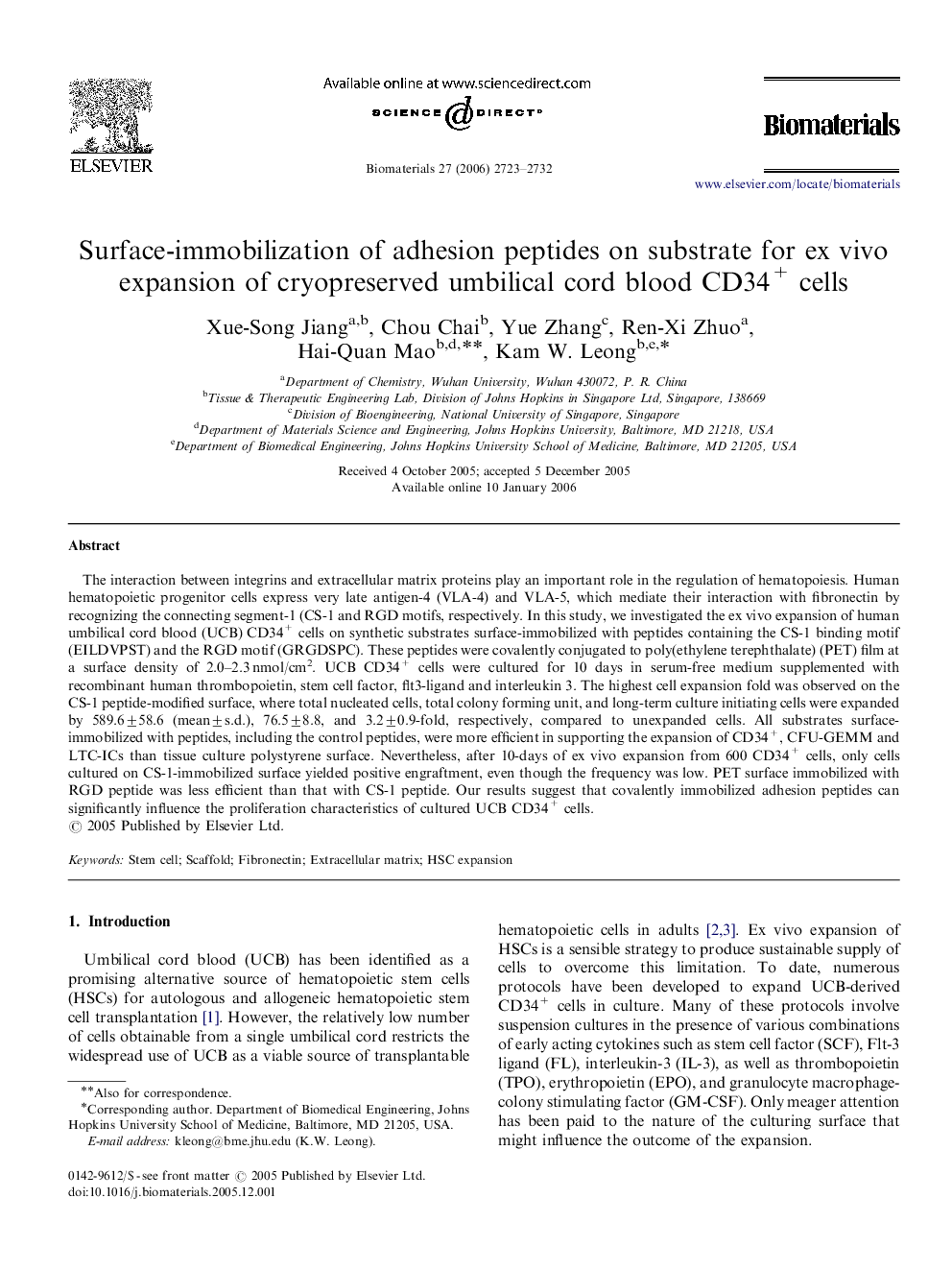| Article ID | Journal | Published Year | Pages | File Type |
|---|---|---|---|---|
| 11840 | Biomaterials | 2006 | 10 Pages |
The interaction between integrins and extracellular matrix proteins play an important role in the regulation of hematopoiesis. Human hematopoietic progenitor cells express very late antigen-4 (VLA-4) and VLA-5, which mediate their interaction with fibronectin by recognizing the connecting segment-1 (CS-1 and RGD motifs, respectively. In this study, we investigated the ex vivo expansion of human umbilical cord blood (UCB) CD34+ cells on synthetic substrates surface-immobilized with peptides containing the CS-1 binding motif (EILDVPST) and the RGD motif (GRGDSPC). These peptides were covalently conjugated to poly(ethylene terephthalate) (PET) film at a surface density of 2.0–2.3 nmol/cm2. UCB CD34+ cells were cultured for 10 days in serum-free medium supplemented with recombinant human thrombopoietin, stem cell factor, flt3-ligand and interleukin 3. The highest cell expansion fold was observed on the CS-1 peptide-modified surface, where total nucleated cells, total colony forming unit, and long-term culture initiating cells were expanded by 589.6±58.6 (mean±s.d.), 76.5±8.8, and 3.2±0.9-fold, respectively, compared to unexpanded cells. All substrates surface-immobilized with peptides, including the control peptides, were more efficient in supporting the expansion of CD34+, CFU-GEMM and LTC-ICs than tissue culture polystyrene surface. Nevertheless, after 10-days of ex vivo expansion from 600 CD34+ cells, only cells cultured on CS-1-immobilized surface yielded positive engraftment, even though the frequency was low. PET surface immobilized with RGD peptide was less efficient than that with CS-1 peptide. Our results suggest that covalently immobilized adhesion peptides can significantly influence the proliferation characteristics of cultured UCB CD34+ cells.
